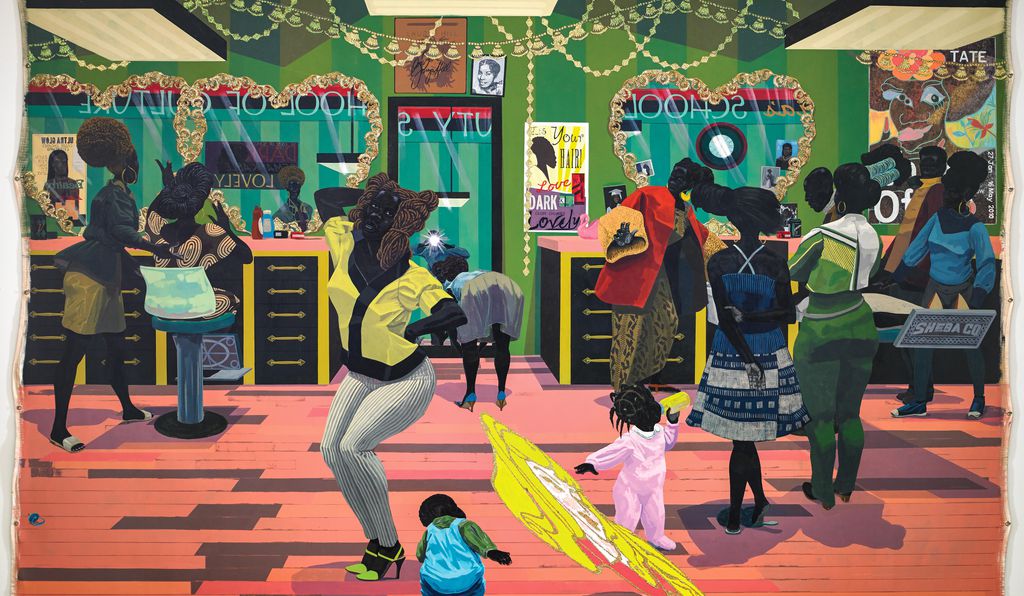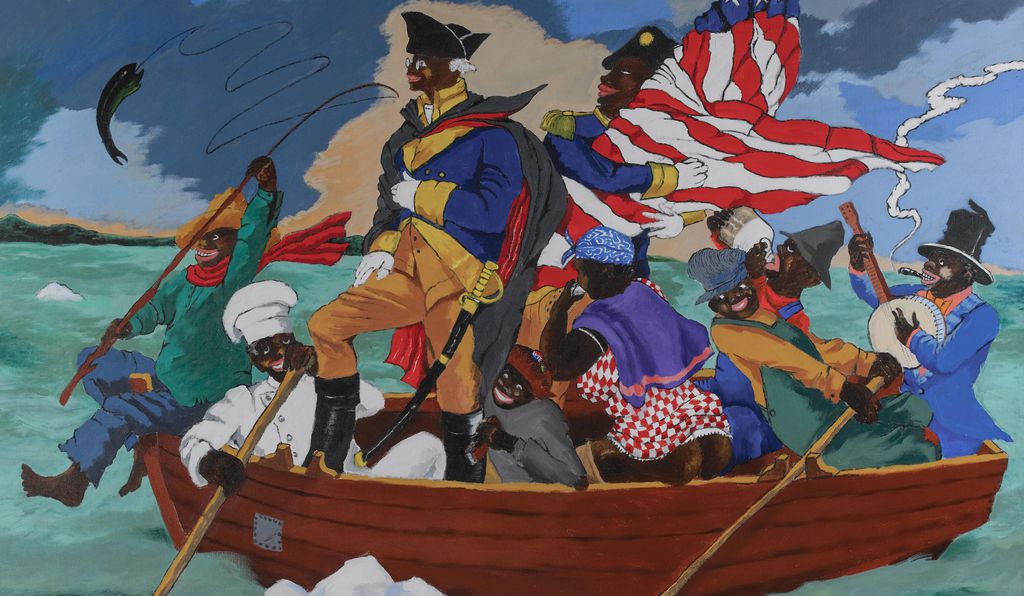What does it mean to redefine art history? For Mickalene Thomas, a luminary of the contemporary art world who specializes in dazzling collage portraits, it means “reclaiming canonized images of beauty and reinterpreting them.” Her take on Édouard Manet’s celebrated 1863 canvas Le Déjeuner sur l’herbe (The Luncheon on the Grass), in which two formally dressed men lounge in a wooded scene with a nude woman, is the bold image above, which she titles Le déjeuner sur l’herbe: Les Trois Femmes Noires (The Three Black Women). This 10- by 24-foot collage, part of a new group exhibition at the Seattle Art Museum, depicts the subjects in a mosaic of vibrant colors, fragmented shapes, rhinestones and glittered Afros. “These women are so grounded and perfectly comfortable in their own space,” says Catharina Manchanda, a curator at the museum. “While we might be looking at them, they are also sizing us up.”
For the past decade, Thomas, an African-American Yale-trained artist in her 40s who lives in New York City, has concentrated on creating portraits, in various formats, of black women—her muses, she calls them. This gesture in itself challenges conventional notions of femininity, sexuality and blackness in art history, especially given the complicated role of black bodies in 19th-century paintings. Often working from her own studio photographs of models, Thomas has a singular aesthetic combining memories of her ’70s childhood, pop culture and classical art in large-scale works that often seem to draw on chic blaxploitation films like Gordon Parks’ Shaft. Her muses, adorned in lush fabrics, unapologetic bold prints and sometimes nude, mirror Pam Grier-esque heroines while also subverting the motif of the odalisque, or courtesan. “By portraying real women with their own unique history, beauty and background, I’m working to diversify the representations of black women in art,” Thomas tells Smithsonian.
Outside of academic art circles and the gallery scene, Thomas is a kind of Renaissance rock star in her own right. She has created a commissioned portrait for the R&B artist Solange Knowles, directed an introspective HBO documentary, Happy Birthday to a Beautiful Woman, and was herself the subject of a portrait by the famed painter Kehinde Wiley.
Thomas’ artwork, which critics have called post-black and post-feminist because of its nuanced rebelliousness, is helping to generate American art’s next wave, which will be more culturally diverse. “What’s happening in art and history right now is the validation and agency of the black female body,” she says. “We do not need permission to be present.”


Figuring History: Robert Colescott, Kerry James Marshall, Mickalene Thomas
Contemporary artists Robert Colescott (1925–2009), Kerry James Marshall (b. 1955), and Mickalene Thomas (b. 1971) are distinguished by their attention to a history of representation, which they re-visit and revise to reflect on individual and collective Black experience.

Subscribe to Smithsonian magazine now for just $12
This article is a selection from the January/February issue of Smithsonian magazine





